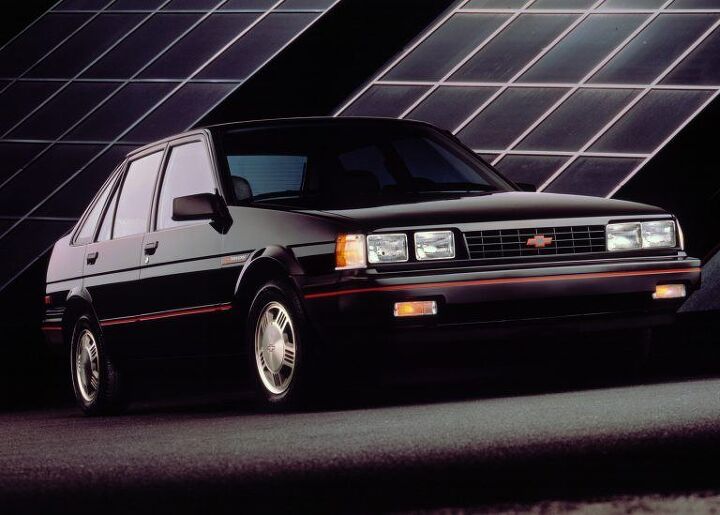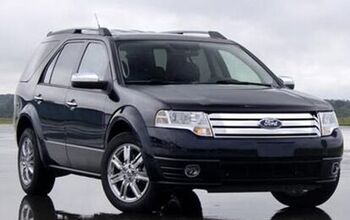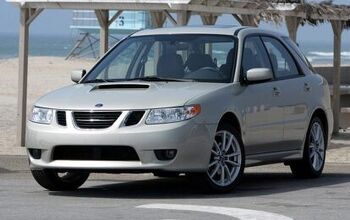QOTD: Automotive Cooperation Done Right?

In last Wednesday’s QOTD post we covered all the worst examples of automotive collaboration. Commenters racked up the examples, sharing collaboration failures even worse than the Jaguar X-Type selected for textual pillory in the post.
Today we flip it around and discuss the best outcomes of automaker cooperation.
As before, both formal joint ventures and more casual manufacturer cooperation are up for discussion. Today’s example of cooperative excellence came with length and some serious production figures.
Of course that’s not really a Chevrolet Nova in the photo, but rather a Toyota Corolla. The twins were the first product of the long-lived NUMMI plant. Opened in 1984, the plant was jointly owned by General Motors and Toyota. The location originally existed as General Motors Fremont Assembly, in operation between 1962 and 1982. Fremont produced a variety of vehicles including the C/K trucks, Pontiac GTO, and the Chevrolet Celebrity.
The benefits for each company were clear: General Motors wanted to learn about lean manufacturing from an expert, and Toyota wanted to establish a manufacturing location in North America while implementing their production methodology on a new continent. A secondary benefit to Toyota came from the avoidance of import restrictions, back when such things were a concern.
Cars produced at NUMMI included one generation of Nova, five generations of Corolla, three generations of Geo/Chevy Prizm, the Toyota Pickup, Tacoma, and Matrix, and the Pontiac Vibe. Peak production occurred in 2006; a hefty 428,633 units.
Though the products were just fine, all was not well at NUMMI. The plant operated at about 59 percent capacity in the late Eighties, and had not made back its investment costs by 1991. GM was unable to implement the lean manufacturing techniques across their other U.S. plants. Toyota experienced higher costs at NUMMI, as it was the company’s only union plant in the country. Toyota’s manufacturing and supply chains were centralized in the Midwest, very far from Fremont. Relations were strained.
In June 2009 GM announced the joint venture’s end, as it and Toyota could not decide on a worthwhile product to produce at the location. Later that year, Toyota announced Tacoma production would shift to San Antonio, with Corolla moving to Mississippi. The last vehicle produced under the GM-Toyota ownership was a Corolla, on April Fools Day 2010. NUMMI lives on today as the Tesla Factory and tent city.
What’s your pick for best manufacturer cooperation?
[Images: GM]

Interested in lots of cars and their various historical contexts. Started writing articles for TTAC in late 2016, when my first posts were QOTDs. From there I started a few new series like Rare Rides, Buy/Drive/Burn, Abandoned History, and most recently Rare Rides Icons. Operating from a home base in Cincinnati, Ohio, a relative auto journalist dead zone. Many of my articles are prompted by something I'll see on social media that sparks my interest and causes me to research. Finding articles and information from the early days of the internet and beyond that covers the little details lost to time: trim packages, color and wheel choices, interior fabrics. Beyond those, I'm fascinated by automotive industry experiments, both failures and successes. Lately I've taken an interest in AI, and generating "what if" type images for car models long dead. Reincarnating a modern Toyota Paseo, Lincoln Mark IX, or Isuzu Trooper through a text prompt is fun. Fun to post them on Twitter too, and watch people overreact. To that end, the social media I use most is Twitter, @CoreyLewis86. I also contribute pieces for Forbes Wheels and Forbes Home.
More by Corey Lewis
Latest Car Reviews
Read moreLatest Product Reviews
Read moreRecent Comments
- Kjhkjlhkjhkljh kljhjkhjklhkjh A prelude is a bad idea. There is already Acura with all the weird sport trims. This will not make back it's R&D money.
- Analoggrotto I don't see a red car here, how blazing stupid are you people?
- Redapple2 Love the wheels
- Redapple2 Good luck to them. They used to make great cars. 510. 240Z, Sentra SE-R. Maxima. Frontier.
- Joe65688619 Under Ghosn they went through the same short-term bottom-line thinking that GM did in the 80s/90s, and they have not recovered say, to their heyday in the 50s and 60s in terms of market share and innovation. Poor design decisions (a CVT in their front-wheel drive "4-Door Sports Car", model overlap in a poorly performing segment (they never needed the Altima AND the Maxima...what they needed was one vehicle with different drivetrain, including hybrid, to compete with the Accord/Camry, and decontenting their vehicles: My 2012 QX56 (I know, not a Nissan, but the same holds for the Armada) had power rear windows in the cargo area that could vent, a glass hatch on the back door that could be opened separate from the whole liftgate (in such a tall vehicle, kinda essential if you have it in a garage and want to load the trunk without having to open the garage door to make room for the lift gate), a nice driver's side folding armrest, and a few other quality-of-life details absent from my 2018 QX80. In a competitive market this attention to detai is can be the differentiator that sell cars. Now they are caught in the middle of the market, competing more with Hyundai and Kia and selling discounted vehicles near the same price points, but losing money on them. They invested also invested a lot in niche platforms. The Leaf was one of the first full EVs, but never really evolved. They misjudged the market - luxury EVs are selling, small budget models not so much. Variable compression engines offering little in terms of real-world power or tech, let a lot of complexity that is leading to higher failure rates. Aside from the Z and GT-R (low volume models), not much forced induction (whether your a fan or not, look at what Honda did with the CR-V and Acura RDX - same chassis, slap a turbo on it, make it nicer inside, and now you can sell it as a semi-premium brand with higher markup). That said, I do believe they retain the technical and engineering capability to do far better. About time management realized they need to make smarter investments and understand their markets better.



































Comments
Join the conversation
What about the Mclaren Pontiac Grand Prix? Think of it as the everyman's F1!
Jaguar / Ford. Hate the X-Type all you want. - The Lincoln LS was a great car. - Ford did wonders for the XJ and XK. They reworked them, dramatically improving quality, while maintaining the Jaguar feel. Love those cars.